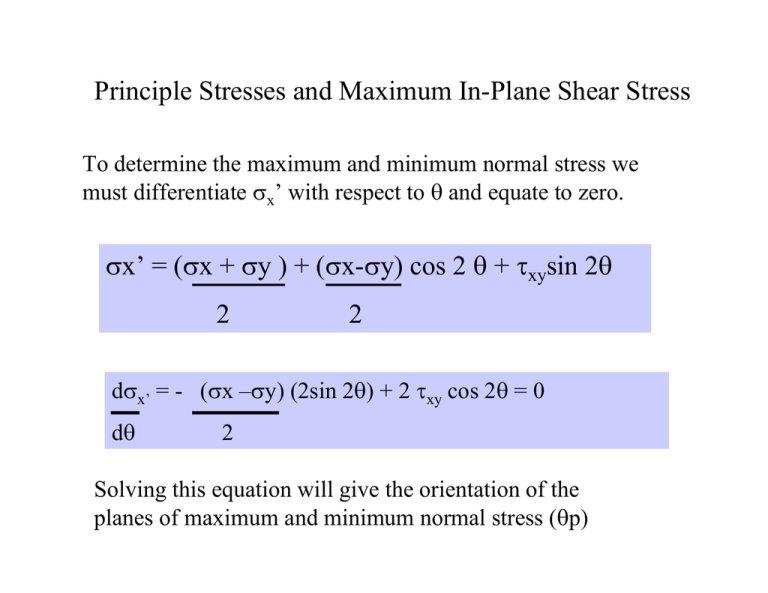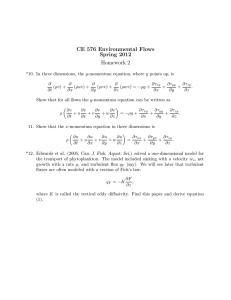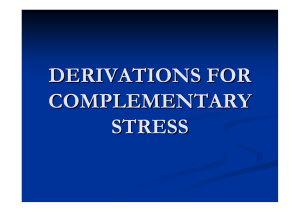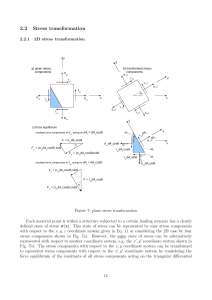Principle Stresses & Shear Stress: Mechanics of Materials
advertisement

Principle Stresses and Maximum In-Plane Shear Stress To determine the maximum and minimum normal stress we must differentiate σx’ with respect to θ and equate to zero. σx’ = (σx + σy ) + (σx-σy) cos 2 θ + τxysin 2θ 2 2 dσx’ = - (σx –σy) (2sin 2θ) + 2 τxy cos 2θ = 0 dθ 2 Solving this equation will give the orientation of the planes of maximum and minimum normal stress (θp) tan 2θp = τxy (σx-σy)/2 N.B. The solution has two roots θp1 and θp2, the values of 2θp1 and 2θp2 are 180o apart, which means that θp1 and θp2 will be 90o apart. Principle normal stresses can be obtained by substituting the values of θp1 and θp2 into equation of σx’. Sin 2θp1 = τxy / √ [(σx-σy)/2]2 + τxy2 Cos 2θp1 = [ (σx-σy)/2 ] / √ [(σx-σy)/2]2 + τxy2 Getting values of sin 2θp2 and cos 2θp2 and substituting into σx’ we will get: σ1,2 = ( σx + σy ) /2 ± √ [(σx-σy)/2]2 + τxy2 Depending on the sign, this equation gives either the maximum or minimum principle normal stresses (σ1> σ2). N.B. If the the values of θp1 and θp2 are substituted into the shear stress equation (τx’y’ ) it will give τx’y’ = 0. Y’ x X’ Maximum In Plane Shear Stress To determine the maximum and minimum shear stress we must differentiate τx’y’ with respect to θ and equate to zero. We will get the values of θs which determines the orientation of an element subjected to maximum shear stress: dτx’y’ = - σx –σy sin 2 θ + τxy cos 2θ 2 dτx’y’ = - (σx –σy ) 2 cos 2θ - 2 τxy sin 2 θ = 0 θ 2 tan 2 θs = - [(σx –σy )/2 ] / τxy tan 2 θs = - [(σx –σy )/2 ] / τxy N.B. Each root of 2θs is 90o from 2θp , which means that θs and θp are 45o apart. The planes of maximum shear stress can be determined by orienting an element 45o from the position of an element that defines the planes of principle stress. By substituting the values of θs1 and θs2 into the tx’y’ equation will give: τmax = ± √ [(σx-σy)/2]2 + τxy2 There is also a normal stress on the planes of maximum inplane shear stress: σ avg = (σ x + σ y ) / 2





